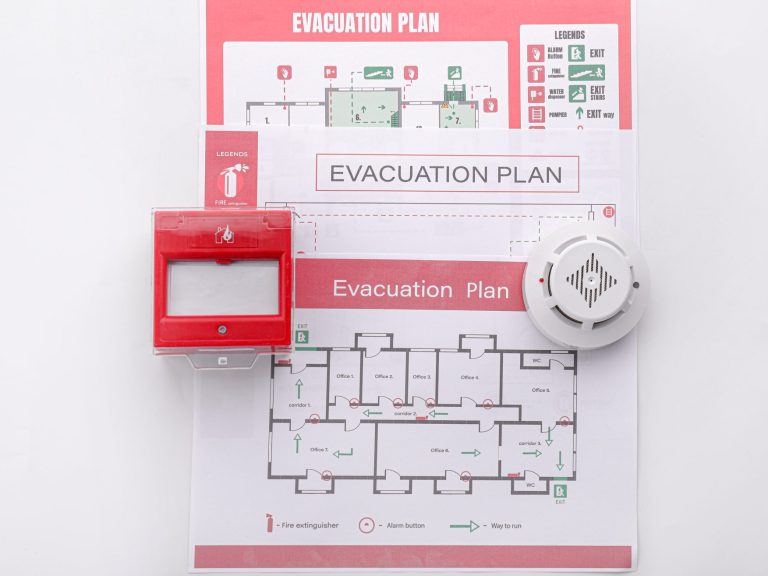As temperatures increase, people with Down syndrome are vulnerable to heat-related complications and illness. Extreme heat causes more fatalities than any other natural disaster in Australia. As our climate changes with more hot days and intense heatwaves, people with Down syndrome and families need to be more aware of the risks of heat and how to prepare for days of extreme weather.
On this page:
- Preparing for extreme heat
- Heat exhaustion and heat stroke
- How to explain extreme heat to a family member with Down syndrome
- Who should be involved in developing an extreme heat plan for your family member with Down syndrome
- Develop an emergency care plan
- Helpful resources and links
Preparing for extreme heat

One of the important ways to assist a person with Down syndrome to minimise their stress and anxiety in an emergency situation such as a day of extreme heat is through modelling. If a person with Down syndrome sees significant people in their lives (such as parents or support workers) coping well with stressful situations, such as an extreme heat day, through being prepared and following strategies to minimise risk, they too will have less anxiety and stress.
People with Down syndrome may have difficulty regulating their body temperature or communicating discomfort or signs of illness. This can make it difficult to monitor for signs of heat related stress, so it is important to carefully plan and implement specific strategies to minimise risks.
Stay hydrated
- Encourage regular intake of fluids throughout the day.
- Use a hydration schedule or reminders for those who may have difficulty managing their own water intake.
Cooling
- Use cooling fans, cold compresses or cooling vests to help regulate body temperatures.
- Ensure the space is well-ventilated or air-conditioned.
- Plan to spend the day at a place that is air-conditioned such as a shopping centre or a library if you don’t have access to a cool environment.
Appropriate clothing
- Dress in light coloured, loose fitting and breathable clothing.
- Choose fabric that wicks away moisture to aid in cooling.
Sun protection
- Apply sunscreen with a high SPF.
- Wear a hat and other protective clothing to shield from direct sunlight.
Modify activities
- Reschedule or cancel non-essential outings or do them during the coolest part of the day.
- Adjust the intensity and duration of the activity to prevent over exertion.
- If you have to go outside, take a bottle of water with you, wear a hat and sunscreen and try to stay in the shade.
Emergency preparedness
- Develop an emergency plan that includes protocols for dealing with heat related illnesses (see below for tips).
- Power failure can occur during days of extreme heat. Have your emergency kit prepared with food items that don’t require refridgeration.
- Include a cool-box to store cool packs with medication.
- Make sure medicines are stored at appropriate temperatures.
- Some medications can make a person more sensitive to the sun. Check with your medical specialist to see if medicines need to be changed during extreme heat.
Communication
- Consider what supports a person will need to assist with expressing discomfort.
- Have clear and consistent communication means so that all people supporting the person with Down syndrome understand when there is discomfort, stress or signs of heat-related illness and appropriate responses.
Vulnerable person register
- Consider registering the person with Down syndrome with your local council as a vulnerable person, if they might be unable to comprehend or respond appropriately to warnings and directions in an emergency situation.
- This register will be accessed by the police if there is an event such as a fire, flood, heatwave, earthquake, explosion, terrorist attack, etc.
Prevent heat related health problems by keeping cool and staying hydrated.
Heat exhaustion and heat stroke

Key indicators of heat exhaustion might include:
- Increased sweating
- Flushed or pale skin
- Weakness or fatigue
- Rapid heart beat
- Nausea or vomiting
- Headache
- Dizziness or fainting
- Confusion or irritability
- Cool clammy skin
- Excessive thirst
- Decreased urination
- Difficulty in communication
Be aware of these key indicators. If you observe any of the above signs, take immediate action with your extreme heat plan. If symptoms persist seek medical attention.
How to explain extreme heat to a family member with Down syndrome

When explaining extreme heat to a person with Down syndrome:
- Use simple language and visual aids such as drawing, pictures or diagrams to illustrate hot weather.
- Discuss the day’s temperature on a regular basis so that the person becomes familiar with how it feels on different days.
- Talk about how extreme heat can affect the body.
- Role-play some simple behaviours to adopt on days of extreme heat, such as drinking more fluids, wearing appropriate clothing and seeing shade if outside.
Repetition of these key points will assist a person to understand and follow the strategies and emergency plan.
Who should be involved in developing an extreme heat plan for your family member with Down syndrome

A collaborative and comprehensive approach between key supports is important in developing an extreme heat plan. Consultation with key medical professionals such as the primary physician is important, along with any specialists such as cardiologists or endocrinologists to address relevant condition-specific concerns.
Depending on the person’s everyday activities you may like to discuss what planning needs to occur in different settings such as a classroom, the gym, the work environment or outdoors. Engage with a speech therapist to develop some visual aids or social stories around extreme heat events and your extreme heat plan.
Discuss the plan regularly to help build confidence and preparedness for days of extreme heat.
Ensuring everyone involved in your family member’s life is aware of the plan is important.
Develop an emergency care plan

- Complete your emergency care plan using this template and save a copy to your computer or phone
- Print copies of your plan, put a copy in your emergency kit
- Give a copy of your emergency care plan to your support worker provider, emergency contacts and your doctor or medical team
- Your emergency care plan has space for your medicines, health information, doctor, hospital and pharmacy information
- Complete the Carer Emergency Card, put the card in your wallet and a card in your family member’s wallet.
Taking your time to follow these steps will ensure everyone is prepared.
Helpful resources and links

- Person-centred Emergency Preparedness Toolkit. Co-designed and tested with people with disability, Person-Centred Emergency Preparedness (P-CEP) enables people to self-assess their preparedness, capabilities and support needs and develop a person emergency plan.
- Planning for Emergencies. Some useful resources from Carer Gateway to assist you prepare for any sort of emergency.
- How to cope in a heatwave. This Info Guide by CID has 3 tips to help you in a heatwave.
There are many more fabulous resources available online. Spend some time reviewing them.

